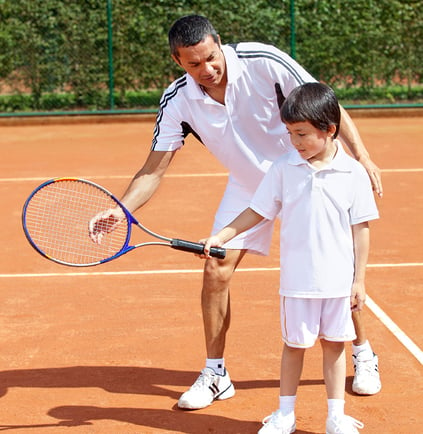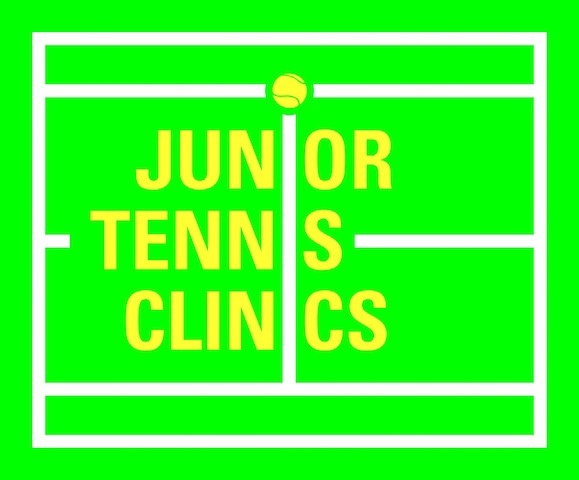
Group lessons: 90-120 minutes five times a week
Tennis training consists of approximately 10% instruction and 90% repetition. Stroke repetition and playing patterns are necessary to make them become automatic. In a typical tennis match, a player has no time to think about technique or to analyze the situation in the 1.5 seconds it takes for the ball to come to them from the other side. The purpose of tennis training is to make all strokes and most patterns of play automatic.
Group lessons provide players with competitiveness and fun, and they are much more cost-effective. Juniors tend to exert more effort when they compare themselves with each other and compete in a group. This allows players of the same level to push each other to the limit, and they improve faster.
Private lessons: an hour to an hour and a half three times a week
The main purpose of private lessons is to learn new strokes, improve or correct technique, and to learn new playing patterns. Players can focus on a certain task without being distracted. Private lessons allow the coach to focus on the most important part of training for a particular player.
Physical training: 60 to 90 minutes two to three times per week in groups
Tennis is an athletic sport that involves sprints at maximum speed, quick reactions, explosiveness, changes of direction, and the endurance to sustain long matches. Players who are not physically fit, fast, strong and able to play for two or more hours without getting tired have no chance of competing at a high level above the age of twelve. Coordination, balance, flexibility, hand-eye coordination, reactions, speed, stamina, strength, and agility are essential. They cannot be developed just through playing in practice or in matches. That’s why it is important to create a tennis training plan for junior tennis athletes. Tennis competition between the ages of 8-14 does not require many fast sprints, explosive starts or quick reactions. At that age play is slower, and the winner is typically the player who doesn’t miss much. However by age 16 and later, juniors start playing and serving much faster. It’s then too late to start working on speed, coordination, reactions and other skills if the fitness work has not been done previously.
Mental training (after age 12): 30 minutes once per week both off court and on-court training during lessons
Successful players under 12 are typically those with better strokes who have played and trained more than the rest. After 12, the mental aspect of tennis becomes more important. Players need to learn how to control their emotions, their thoughts, how to deal with nerves, how to build confidence, and how to stay focused in a match. Match and player-specific situations need to be addressed when players encounter mental challenges.
Some examples of these include competing against a higher-ranked player, playing a lower ranked junior, playing the finals in front of a crowd, coming from behind to level the score, taking advantage of a lead, dealing with gamesmanship, winning a set, and dealing with let-downs. A junior player who is mentally tough has a big advantage.
Playing matches: at least once per week
Playing many different opponents teaches players how to master the strategic part of the game. Playing matches helps juniors gain experience and match toughness. Players will learn how to outplay and outmaneuver opponents, find their weaknesses and exploit them, use their own strengths to win, and master the game. Following this tennis training plan for junior tennis athletes will give your child the edge over the majority of other juniors.

